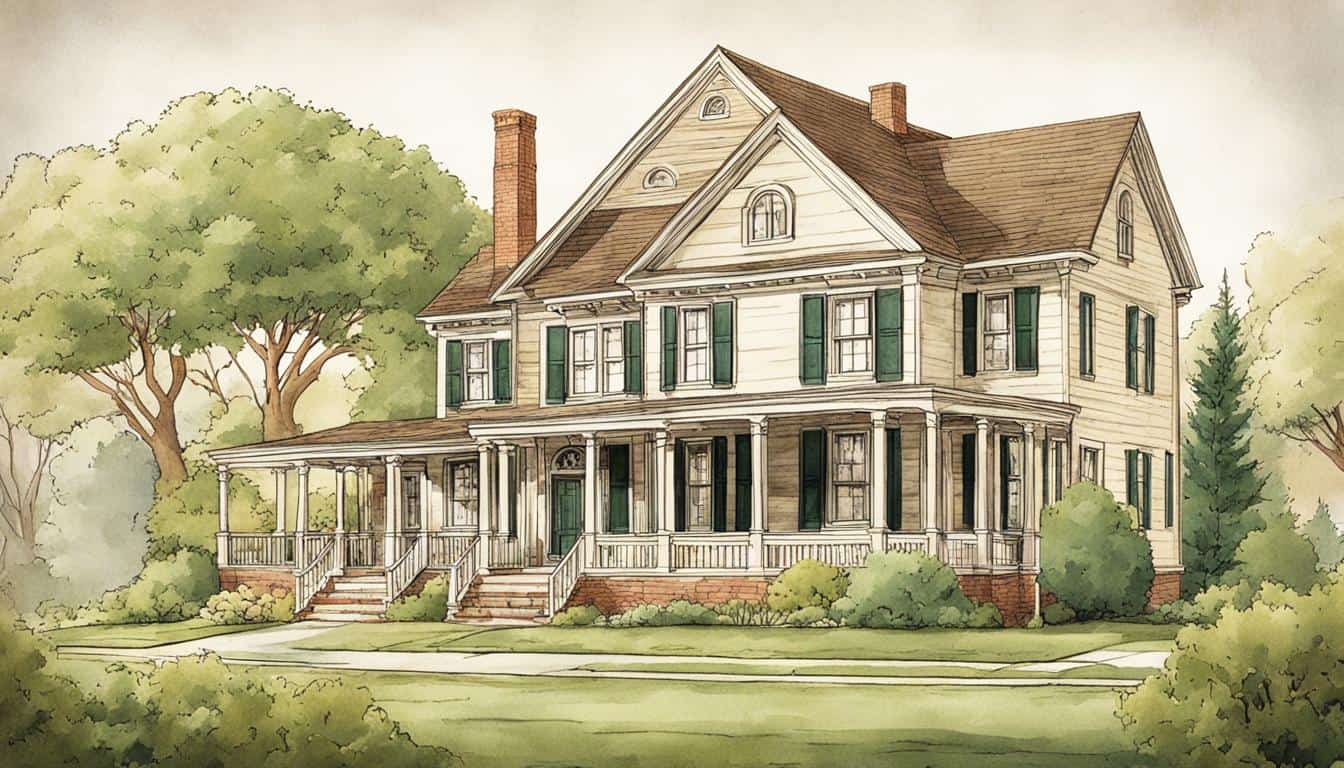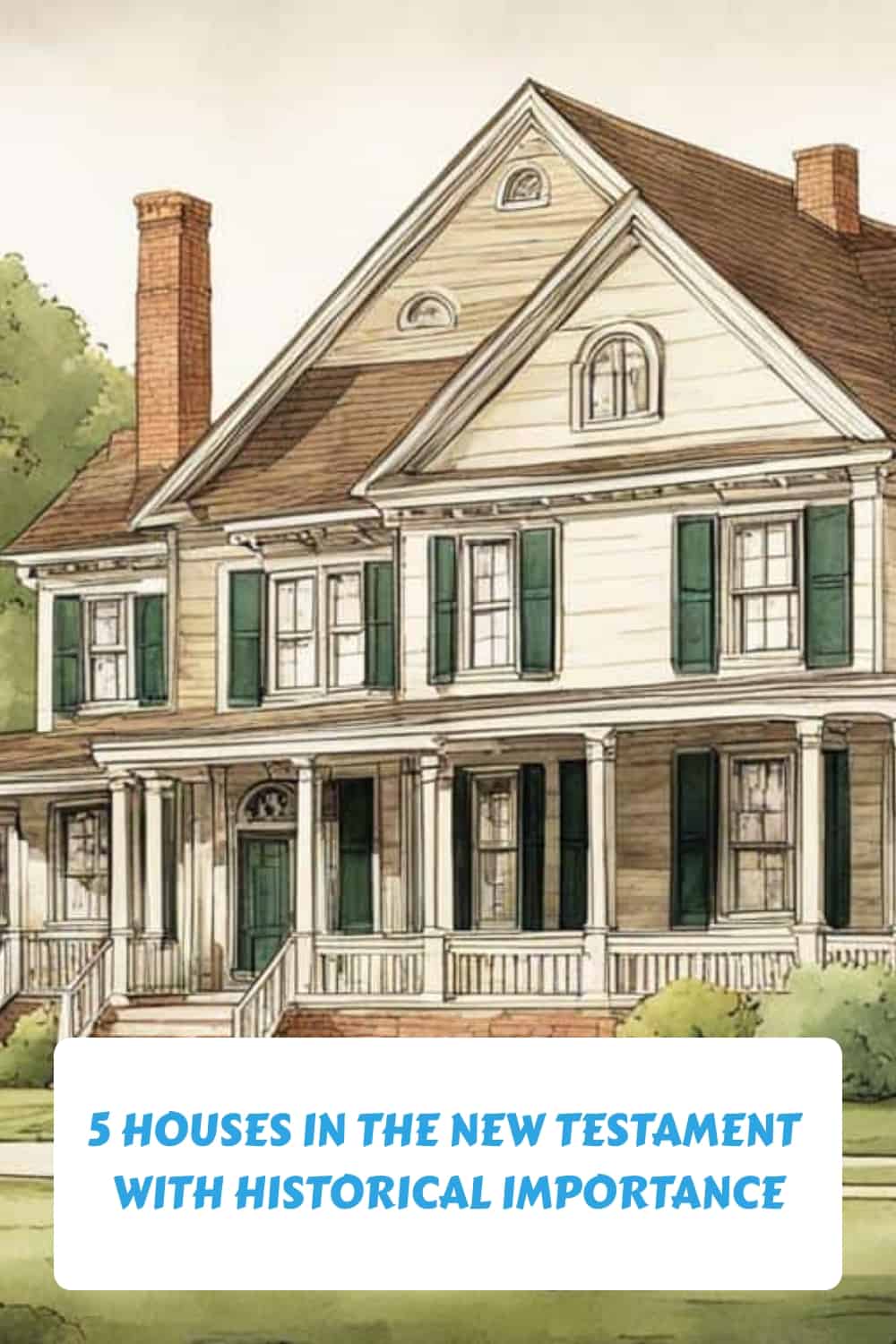Table of Contents
Have you ever wondered about the real-life locations that played a significant role in shaping early Christian history? The houses mentioned in the New Testament have a rich historical importance that continues to inspire faith today. From miraculous events to transformative encounters, these houses served as more than just shelter for their inhabitants. They became epicenters of divine power and places that witnessed the birth of a new movement.
So, which houses from the New Testament hold such extraordinary significance? Let’s explore five of these ancient dwellings and uncover the remarkable stories they tell. Get ready to embark on a journey that will challenge your beliefs and deepen your understanding of early Christianity.
Join us as we step into the footsteps of Jesus and his disciples, and discover the hidden gems of faith that lie within these historical houses. Brace yourself for astonishing tales and timeless lessons that will inspire and transform your perspective. Get ready to uncover the secrets of these houses in the New Testament and the profound impact they continue to have on believers today.
Peter’s House in Capernaum: The Superhero Headquarters of its Time
Located in the picturesque fishing village of Capernaum in Galilee, Peter’s house holds a significant place in the history of early Christianity. This humble abode served as the central hub and home base for Jesus and his disciples during their time in Galilee, witnessing countless miracles and becoming a symbol of faith and divine power.
As Jesus performed miracles throughout Galilee, Peter’s house stood witness to these awe-inspiring acts. People flocked to the house, seeking the healing touch of Jesus and experiencing firsthand the transformative power of his words.
One of the most remarkable miracles that took place in Peter’s house was the healing of a paralyzed man. As the news of Jesus’ presence in Capernaum spread, people crowded around the house, eager to catch a glimpse of the renowned healer. Four faithful friends went to great lengths to bring their paralyzed companion to Jesus, lowering him through the roof of Peter’s house. Moved by their faith, Jesus healed the man, inspiring awe and strengthening the belief of those present.
“And when they could not find a way to do this because of the crowd, they went up on the roof and lowered him on his mat through the tiles into the middle of the crowd, right in front of Jesus.” – Luke 5:19 (NIV)
Another significant event that unfolded in Peter’s house was the healing of Peter’s mother-in-law. Jesus, upon hearing that Peter’s mother-in-law was sick with a high fever, entered the house and, with a simple touch, healed her instantly. This miraculous healing further solidified Peter’s faith and deepened the bond between Jesus and his disciples.
The miracles performed in Peter’s house echoed throughout Galilee, instilling faith and hope in the hearts of those who witnessed or heard about them. The house became a place of gathering, where people could come together to seek solace, witness miracles, and hear the teachings of Jesus.
Today, the remnants of Peter’s house in Capernaum serve as a powerful reminder of the extraordinary events that unfolded within its walls. Visitors from around the world visit this sacred site, connecting with the rich history of Peter, Jesus, and the early Christian community.
Miracles in Peter’s House
| Miracle | Scripture Reference |
|---|---|
| Healing of a paralyzed man | Luke 5:19 |
| Healing of Peter’s mother-in-law | Mark 1:30-31 |
The House of Mary, Martha, and Lazarus in Bethany: A Cozy Hangout Spot
Located in the peaceful town of Bethany, the House of Mary, Martha, and Lazarus stood as a warm haven for Jesus and his beloved friends. Nestled amidst the rolling hills and blooming olive groves, this humble abode provided solace and relaxation for the weary souls seeking respite from their journeys.
Jesus, in his infinite wisdom, recognized the importance of taking time to unwind and connect with his closest companions. As he embarked on his ministry, filled with teaching and miracles, he found solace in the familiar surroundings of the House of Mary, Martha, and Lazarus. It became a place where he could simply be himself, free from the demands of the crowds and the weight of his mission.

Within these walls, Mary, Martha, and Lazarus lovingly received their esteemed guest, providing nourishment for both body and soul. While Martha busied herself with preparations, Mary chose to sit at the feet of Jesus, attentively listening to his teachings. Through her example, we learn the profound importance of pausing, quieting our hearts, and truly listening to the words of wisdom that can transform our lives.
“But one thing is needed, and Mary has chosen that good part, which will not be taken away from her.” – Luke 10:42
In the House of Mary, Martha, and Lazarus, an extraordinary event unfolded that would forever mark the annals of history. Lazarus, a dear friend of Jesus, fell ill and eventually passed away. Yet, through his loving power, Jesus performed a miracle that defied all human comprehension – raising Lazarus from the dead and restoring him to life.
“Lazarus, come forth!” – John 11:43
The resurrection of Lazarus not only demonstrated Jesus’ divinity but also showcased his unwavering love for his friends. It served as a powerful testament to his ability to bring life to the seemingly lifeless, offering a glimpse of the resurrection that awaited all believers.
As we reflect upon the House of Mary, Martha, and Lazarus, we are reminded of its significance as a place of comfort, companionship, and extraordinary miracles. It invites us to prioritize rest, embrace the power of listening, and place our faith in the loving hands of our Savior.
The Upper Room in Jerusalem: The Last Supper and Pentecost
Located in the heart of Jerusalem, the Upper Room is a place of profound significance in Christian history. It is where the Last Supper, one of the most iconic events in the life of Jesus, took place. This sacred room witnessed the gathering of Jesus and his disciples for a final meal together before his crucifixion.
The Last Supper, also known as the Lord’s Supper, holds immense symbolic meaning. As Jesus broke bread and shared the cup of wine with his disciples, he established the sacrament of the Eucharist, signifying his body and blood given for the salvation of humanity. This act of sharing food and drink continues to be an integral part of Christian worship today.
“Take, eat; this is my body… Drink from it, all of you; for this is my blood of the covenant, which is poured out for many for the forgiveness of sins.” – Matthew 26:26-28
Furthermore, the Upper Room holds significance beyond the Last Supper. It is also the place where the disciples gathered after Jesus’ ascension, awaiting the promised gift of the Holy Spirit. It was during the feast of Pentecost that the Holy Spirit descended upon the disciples, empowering them to spread the teachings of Jesus and establish the early Christian church.
Pentecost is considered the birthplace of the church, as the Holy Spirit’s arrival sparked a transformative movement that continues to inspire believers around the world. The Upper Room serves as a powerful reminder of the disciples’ faith and their mission to share the gospel with the world.
Today, the Upper Room is a cherished pilgrimage site for Christians seeking to connect with the rich history of their faith. It stands as a symbol of unity, faith, and the enduring legacy of the Last Supper and Pentecost.
Comparison of the Last Supper and Pentecost
| Event | Last Supper | Pentecost |
|---|---|---|
| Location | Upper Room in Jerusalem | Upper Room in Jerusalem |
| Significance | Establishment of the Eucharist and Jesus’ sacrifice | The descent of the Holy Spirit and the birth of the church |
| Participants | Jesus and His twelve disciples | The disciples and other followers of Jesus |
| Outcome | Foundation of the sacrament of the Eucharist | Empowerment of the disciples to spread the gospel |
The Upper Room in Jerusalem stands as a testament to the transformative power of Jesus’ teachings, the sacrifice he made, and the enduring impact of the Holy Spirit. It is a place of deep spiritual significance and a reminder of the birthplace of the early Christian church.
What Historical Importance Do the Altars in the Bible Hold in Comparison to the Houses in the New Testament?
The famous altars in the Bible hold great historical significance, as they were central to the worship and sacrifice rituals of the Old Testament. In comparison, the New Testament emphasizes the idea of the house as a place of spiritual importance, representing the shift from ritual sacrifice to spiritual communion.
The House of Zacchaeus in Jericho and the House of Cornelius in Caesarea: Stories of Transformation and Inclusivity
Let’s explore two houses in the New Testament that exemplify the transformative power of Jesus and the importance of inclusivity within the early Christian church. These stories remind us of the profound impact that embracing others can have on our lives and communities.
The House of Zacchaeus in Jericho is a vivid example of transformation. Zacchaeus, a tax collector despised by the community, encountered Jesus and was forever changed. Through his encounter with love and compassion, Zacchaeus experienced a profound transformation. Not only did he pledge to give half of his possessions to the poor, but he also promised to repay anyone he had wronged fourfold, demonstrating a complete change of heart.
The House of Cornelius in Caesarea serves as a powerful testimony to the early church’s commitment to inclusivity. When Peter visited the home of Cornelius, a Gentile, he realized that the message of Jesus was meant for all people, regardless of their background. This realization shattered the barriers of exclusivity and opened the doors to a more diverse and inclusive church.
These two houses, the House of Zacchaeus in Jericho and the House of Cornelius in Caesarea, stand as beacons of hope and inspiration for believers today. They remind us of the transformative power of encountering Jesus and the immense value of embracing diversity and inclusivity within our own communities.






